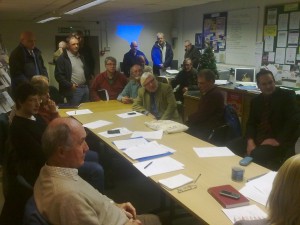If community-led deployments are to succeed on a large scale, there must be a clearly thought out sales process and all residents must fully understand the benefits and value that FTTP will bring to them before they are asked for their support and commitment.
There has been much talk of how superfast broadband would enable forthcoming applications such as telemedicine and high-definition 3D movies on demand, and how fibre would be an investment in our children’s future. However, while this is all true and exciting, it is non-specific and unlikely to convince the average family with already reasonable broadband (by today’s standards) to dig up their garden.
What we need to explain is how fast symmetric broadband, with free inter- and intra-Parish connectivity at 1Gbps, will add value and enrich our lives on a personal and household level immediately and in clear monetary terms.
This post is a first attempt to list some of the tangible benefits that households, schools, and businesses would realistically receive within 6 months of installation. The ideas listed here will form the basis of a sales process that we can use to will the community and obtain the commitments necessary for success, so please add all your ideas to the comments at the bottom of this post.
No idea should be considered too whacky or silly, as long as it is realistic. Remember, 255,075 people live in rural Cumbria, and if an idea convinces just one person to commit effort or a wayleave, it is a worthwhile idea.
Here are some ideas that may strike a chord with residents and encourage them to dig:
1. Increased property prices (this needs to be quantified/cited – any Estate Agents here to help?).
2. Can watch BBC iPlayer HD without stuttering.
3. Can stream iTunes collections/DVD collections with friends and family in neighbouring Parishes.
4. Tele-vet service (many consider telemedicine to be something the NHS should organise and therefore out of local community control, but a local tele-vet service is something that could realistically be offered to local farmers/horse owners).
5. HD Skype to friends and family in other areas/countries with fast symmetric broadband.
6. New classroom activities introduced (this will need to be more specific–any teachers here?).
7. Cheap access to local off-site backup (for backing up video, pictures, music, data)–data wouldn’t need to hit backhaul and could simply be sent to a removable hard drive at a friend’s house, or a more professional service offered by the local techy.
8. Local techys could offer new services to local residents to generate additional income streams (any local techys here with ideas?).
9. Any teens/children (and adults!) would appreciate low-latency for online gaming with friends.
10. Holiday homes and caravan parks could generate additional revenue by charging for fast Internet access.
11. Guest homes/B&Bs could market themselves to a different (and higher paying) clientele.
12. Anybody requiring care could have a direct, full-time video link to a carer in a neighbouring Parish.
13. Training and certification on how to lay and test fibre could help unemployed people obtain employment.
14. If the business model was right, the Parish could obtain a regular income from ISPs paying to offer their services over the infrastructure.
15. If the business model was right, the high (but intangible) value of owning “the last mile” could be realised through an IPO.
16. No more hassle: no more microfilters, no need to test different ADSL modems with different chipsets to get the best performance, and no need to remove the BT faceplate each time there is a fault (note: such hassle is likely to get worse as higher frequencies are pushed over further distances using BET). Unlike ADSL, FTTP typically works or it doesn’t, and speed doesn’t drop off due to incompatibilities or interference.
17. Neighbourhood watch: anybody concerned about crime could use the network to monitor their property from a remote location.
18. Community radio (any budding DJs? Or could this be offered as a practical exercise in schools?).
How will fast, reliable, symmetric and low-latency Internet access with free 1Gbps inter- and intra-Parish connectivity directly benefit you, your household, your neighbour, Mr Smith from the next Parish and Mrs Jones the local business owner?


Latest Tweet from @bbcumbria
Things you may have missed...(from Cumbria's best broadband bloggers) http://bit.ly/gaSCBj #jfdi #broadband #digitalbritain #kftelehealth 2011/03/03